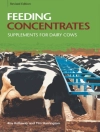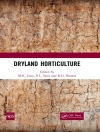Desert truffles are found in every known desert, irrespective of the habitat – cool or hot, loamy or acidic, sandy or heavy soil – the only common condition seems to be a limited supply of water. In contrast to ‘true’ truffles, desert truffles have evolved over time in different families, mainly within the order Pezizales. While in some arid areas, desert truffles have been traditionally used as food, in most regions interest has only recently been increasing, and truffles are now treasured for their nutritional value, as an income source and for research.
This volume gives a comprehensive overview of the phylogeny, biology, mycorrhizal association, and distribution of desert truffles, their use, biochemical and medicinal properties, as well as their domestication and cultivation.
Innehållsförteckning
Hypogeous desert fungi.- Nomenclatural history and Genealogies of Desert Truffles.- Cryptic and new species.- Soil Properties.- Types of Mycorrhizal Association.- Pre-symbiotic interactions between the desert truffle Terfezia boudieri and its host plant Helianthemum sessiliflorum.- Benefits conferred on plants.- Ecology and Distribution of Desert Truffles in Western North America.- The European desert truffles.- Mediterranean Basin: North Africa.- Asian Mediterranean Desert Truffles.- Non mediterranean Asian desert countries.- Ecology and Distribution of Desert Truffles in the Kalahari of southern Africa.- Ecology and Distribution of Desert Truffles in the Australian Outback.- The History of Desert-Truffle Use.- Enzymes in Terfezia claveryi ascocarps.- Nutritional and antioxidant properties of Terfezia and Picoa.- Nutritional and antioxidant Properties of the white desert truffle Tirmania nivea (Zubaidi)..- Preservation of Truffles.- The Medicinal Value of Desert Truffles.- Domestication: Preparation of mycorrhizal seedlings.- Preparation and maintenance of both man-planted and wild plots.












